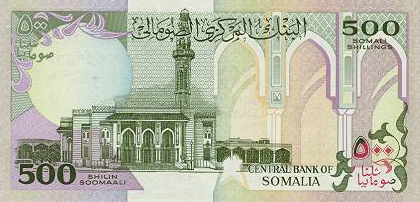Money matters
By Warsan staff writer
The Central Bank of Somalia (CBS) last printed bank notes in the year 1991. This is also the year the government collapsed. It follows that the majority or all bank notes circulating in Somalia are old and/or depleted. In 2017, the International Monetary Fund(IMF) purposed to partner with the government of Somalia to print official banknotes to beat counterfeits. David Pilling of the Financial Times wrote that warlords, businessmen and breakaway regions were guilty of printing these counterfeits with some shipping from abroad according to.
A central bank’s mandate is to use both monetary and fiscal policy to help bring economic stability to a nation. Monetary policy simply means that the central bank manages the supply of money within the economy as well as the interest rates so as to achieve macroeconomic objectives like controlling inflation, consumption and liquidity. Monetary policy strictly involves the influence a central bank has on a country’s money supply
Fiscal policy on the other end is when the government adjusts its spending levels and tax rates in a bid to monitor and influence acountry’s economic trajectory. From the workings of these two instruments (monetary and fiscal) policy, the first order of business is for Somalia to first create strong and credible institutions. This is the backbone to the success of printing of any new currency to the country.
The question of Somalia printing its own currency is not a matter of if but how. Admittedly, challenges exist in this regard and endeavour, but this must not be misinterpreted to mean that they should not or cannot be printed. Every government must control its own economic activity, and the most basic way of doing this is by printing own money.
Somalia’s overreliance on the US dollar should both worry government and also inspire them to print the currency. The current relative calm and return to normal business in Somalia, as can be witnessed with the return of commercial airlines from neighbouring countries, and the reestablishment of private business like restaurants, real estate agencies and even gyms demonstrates that the country is ready to rise from its ashes.
Somalia exports around 5 million livestock annually to markets in the Gulf States. Such activities would spur the local economy better if the unit of currency was the Somalia shilling and not the US dollar – which should be a buffer or reserve currency, not act as the primary unit of transacting.
However, this is not just about the Somali government. The international community must help too. With reports that criminal elements take advantage of loopholes to print local currency abroad and smuggle it into the local economy,agencieslike Interpol must be on high alert to apprehend the masterminds and put an end to such schemes.
To demonstrate one merit of having a robust local currency, government can sell government bonds to local investors and increase currency circulation, as well as buy bonds itself.The ripple effect will be to inspire the people in the capacity of their own economy to meet some of their growth needs.
The success or failure of printing new notes lies squarely with the CBS and national government. It would help to introduce the idea gradually so that citizens are adequately informed about it, to inspire faith in the both the process of doing it, as well as the eventual product.

